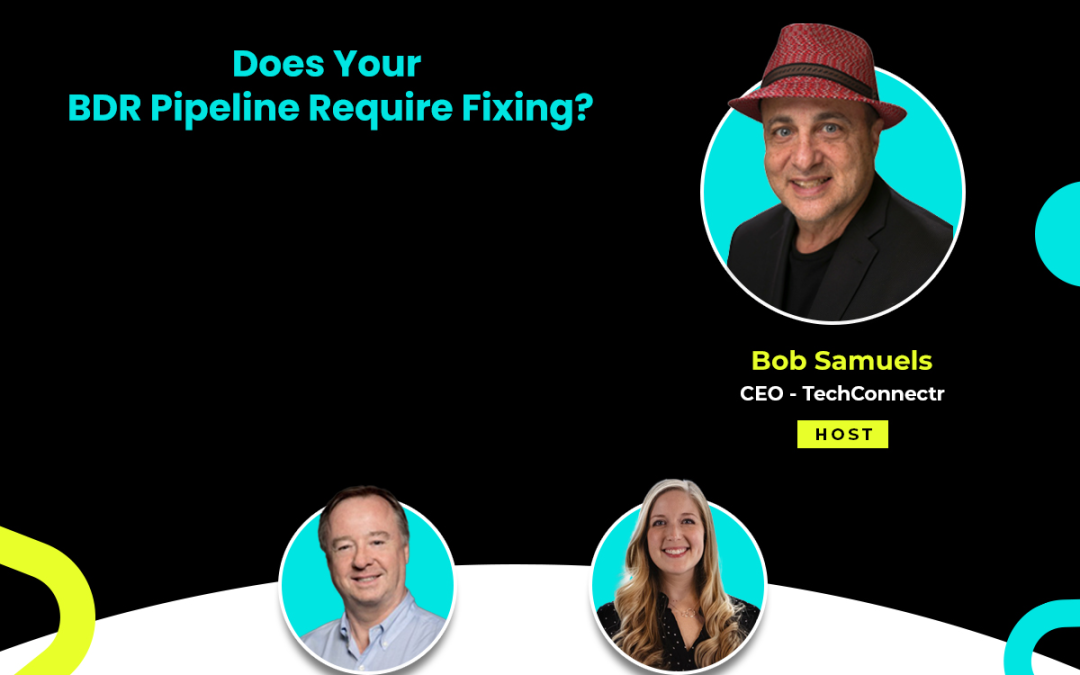Boosting BDR Pipeline Performance: Insights and Strategies
Ever wonder why some businesses seem to have a magic touch when it comes to sales, while others struggle to keep their pipelines flowing? The secret often lies in how they manage their Business Development Representatives (BDR) pipelines. With sales and marketing evolving rapidly, staying ahead requires a keen understanding of the challenges and opportunities in building a robust BDR pipeline.
In our latest “Candid with Bob” webinar held on February 15, 2024, ABM experts Michael Phelan and Alicia Anderson Pieri along with Bob discussed some techniques of how one can manage their BDR pipelines and generate B2B leads more effectively.
Missed the webinar? Check Out The Entire Webinar Here.
The BDR Pipeline Today: A Mixed Bag of Opportunities and Challenges
Let’s dive into the heart of the matter. The BDR pipeline, long revered as the engine of growth, has hit some turbulence. Michael Phelan from Go-To-Market Pros pointed out a concerning trend: the effectiveness and performance of BDR pipelines saw a significant dip in 2023, and it looks like this pattern is set to continue into 2024. With conversions and discovery meetings plummeting, it’s clear that companies need to rethink their strategies to revive their pipelines.
Quality Over Quantity
One of the key takeaways from the discussion is the pressing need for a shift from a quantity-focused approach to prioritizing quality in lead generation and nurturing. Alicia Anderson-Pieri, with her rich background in sales and account management, emphasized the importance of refining pipeline processes. This means focusing on interactions that provide real value to potential customers rather than just pushing for numbers.
The Role of Technology and Data in Revitalizing BDR Efforts
Through digital interactions, leveraging technology to understand and engage with prospects is more crucial than ever. Tools like Gong are bringing new insights into how leads interact with sales materials, but the question remains: do these interactions lead to sales? This is where the blend of technology and human insight becomes invaluable. By focusing on meaningful engagements and utilizing data to tailor approaches, businesses can navigate through the noise and connect with their prospects on a deeper level.
Emphasizing Buyer Value: A Strategy for Success
The conversation highlighted a pivotal shift towards emphasizing buyer value. Buyers today are inundated with choices and information, making it harder for messages to stand out. By delivering genuine value and insights, especially those relating to a prospect’s industry peers and competitors, businesses can capture attention and foster meaningful conversations.
Ideal Customer Profiles (ICP): The Foundation of Effective Targeting
Understanding and continuously refining your ICP is fundamental. This involves deep dives into your current customer base to identify characteristics of your best customers and using this data to target similar prospects. However, the challenge doesn’t stop at identifying your ICP; it extends to ensuring your sales and marketing teams are aligned and focused on these profiles. This alignment is critical for creating a targeted, efficient approach to pipeline building.
The Key to a Stronger Pipeline
A recurring theme in the discussion was the need for better training and nurturing of BDR talent. The traditional model of relying heavily on BDRs to generate leads is proving to be less effective. Instead, a more strategic approach, where BDRs are equipped with the skills and tools to engage meaningfully with prospects, is needed. This involves a combination of training, the right technology, and a culture that values quality engagements over sheer volume.
Collaboration Between Sales and Marketing
The synergy between sales and marketing teams is more crucial than ever. With the lines between these two functions blurring, a collaborative approach can ensure that marketing efforts are effectively translated into sales opportunities. This collaboration extends to sharing insights, aligning on target profiles, and jointly developing strategies to engage and convert prospects.
As we look towards 2024, it’s evident that the traditional BDR pipeline model needs a makeover. This involves a multifaceted approach that prioritizes buyer value, leverages technology wisely, and fosters a culture of continuous learning and adaptation among sales teams.
Engage, Don’t Just Sell
In conclusion, the future of BDR pipelines hinges on our ability to engage with prospects in a meaningful way. It’s about understanding their needs, challenges, and aspirations and presenting solutions that resonate on a deeper level. As businesses, we must be willing to adapt, innovate, and, most importantly, listen to our prospects and customers. The path to a robust, effective BDR pipeline is paved with quality interactions, strategic alignment, and a relentless focus on delivering value.
So, what’s your take on revamping your BDR pipeline for the future? Are you ready to take the leap and redefine success for your sales and marketing efforts?
Partner with TechConnectr to achieve BDR success!

